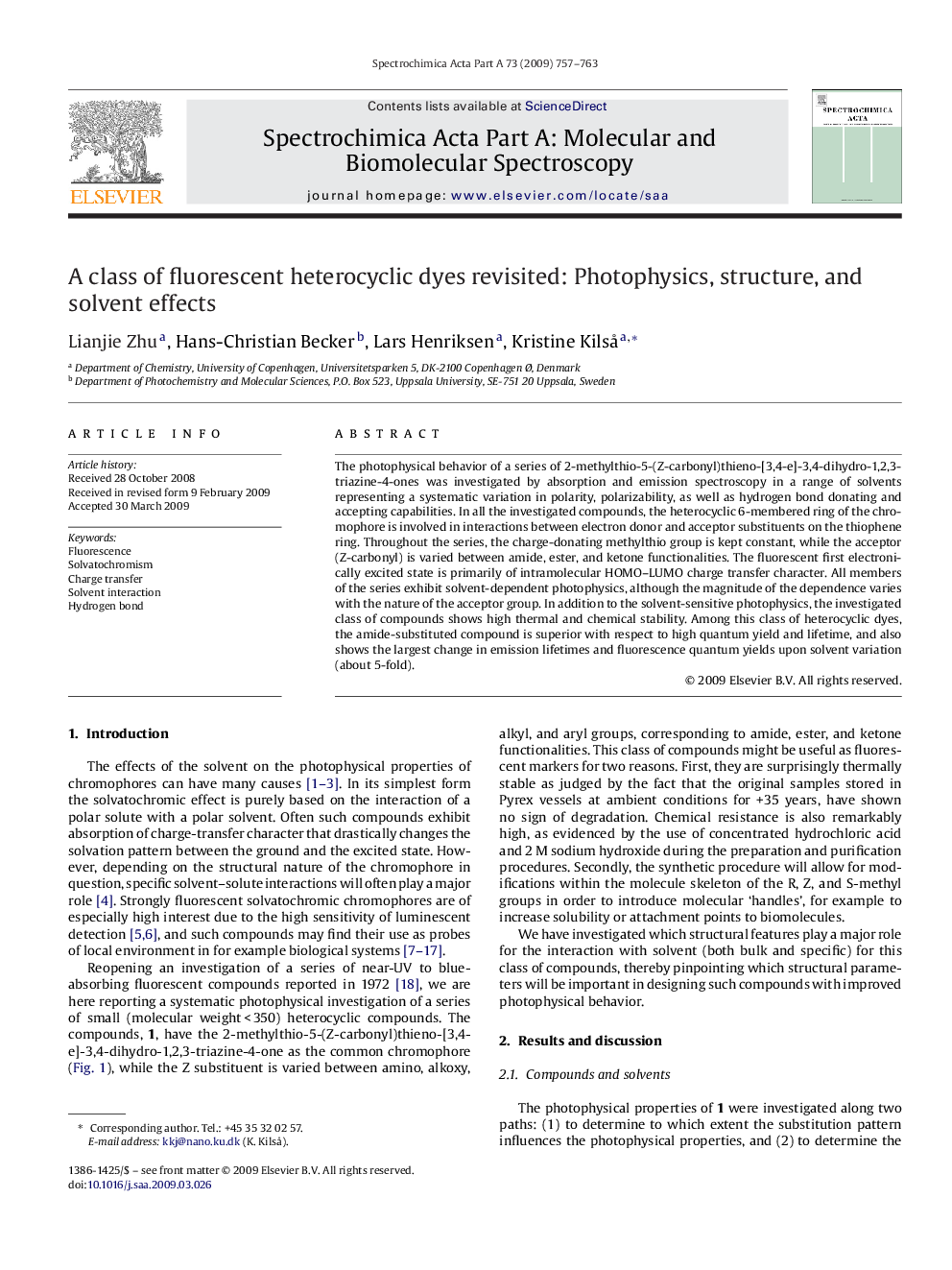| Article ID | Journal | Published Year | Pages | File Type |
|---|---|---|---|---|
| 1237598 | Spectrochimica Acta Part A: Molecular and Biomolecular Spectroscopy | 2009 | 7 Pages |
Abstract
The photophysical behavior of a series of 2-methylthio-5-(Z-carbonyl)thieno-[3,4-e]-3,4-dihydro-1,2,3-triazine-4-ones was investigated by absorption and emission spectroscopy in a range of solvents representing a systematic variation in polarity, polarizability, as well as hydrogen bond donating and accepting capabilities. In all the investigated compounds, the heterocyclic 6-membered ring of the chromophore is involved in interactions between electron donor and acceptor substituents on the thiophene ring. Throughout the series, the charge-donating methylthio group is kept constant, while the acceptor (Z-carbonyl) is varied between amide, ester, and ketone functionalities. The fluorescent first electronically excited state is primarily of intramolecular HOMO-LUMO charge transfer character. All members of the series exhibit solvent-dependent photophysics, although the magnitude of the dependence varies with the nature of the acceptor group. In addition to the solvent-sensitive photophysics, the investigated class of compounds shows high thermal and chemical stability. Among this class of heterocyclic dyes, the amide-substituted compound is superior with respect to high quantum yield and lifetime, and also shows the largest change in emission lifetimes and fluorescence quantum yields upon solvent variation (about 5-fold).
Related Topics
Physical Sciences and Engineering
Chemistry
Analytical Chemistry
Authors
Lianjie Zhu, Hans-Christian Becker, Lars Henriksen, Kristine Kilså,
